"Women Who Hate Photography"
By: Thorsten Overgaard. August 17, 2024. Most recent update September 8, 2024.
No, women don't hate photography. But 70% of digital cameras are bought by men. In today's article, I will present a good handful of women photographers who have indulged in photography
One point I want to make is that photography attracted many female photographers when portable high-quality cameras became a reality with the Leica in 1925. Another point I want to raise, or perhaps a question for you, is why so few women rise to fame and stardom like their male counterparts?
One reason could be that men approach photography as if they own it. Self-critique is not a male virtue, and even when men suffer from serious self-doubt, they move forward with masculine power.
Women, on the other hand - that is what I feel I observe - like to have education, certificates, and approval before they dare let others call them great. They would never claim so themselves.
And even when women do become truly awesome and great, they don't brag. They just take photos.

Roswitha Wesiak in my workshop with her Leica M9 Titanium. A graphic designer turned painter, photographer and world traveler. © Thorsten Overgaard.
Where is the camera designed for women?
In my own household, I did a small survey on camera designs. The response was that "cameras are not designed for women. Where is the female camera that looks chic, maybe with nice straps?"
| |
 |
| |
The Nikon EM manual |
As a fun fact, my own first SLR camera, the Nikon EM (1979) was developed as a small, cute, light-weight, easy-to-use "SLR Camera for Women" and to compete with similar models like the Olympus OM (1972).
But clearly, there would be more ways to make a camera for women? Mostly, cameras are clearly made for technical nerds, by technical nerds.
Why sexist photo competitions?
Another subject I surveyed was the idea of photo competitions for women only. The response was that it was sexist. I agree, but I understand where it comes from; the same place as demands for female politicians and business leaders. But is it fair to demand equality? Further down in this article, however, there are also examples of Ellen von Umwerth and others, that show how women clearly see things differently. For that reason alone, competitions for women only, judged by women, are not a bad idea.
However, one thing is the perspective of female photographers. Another is, how to promote it?
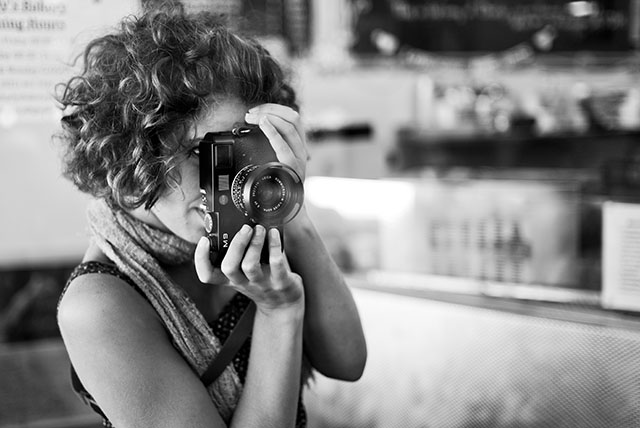
Haylee did my workshop in Cape Town, and then went on to open a school teaching English in Thailand and become a poet. Occasionally with a camera.
What could women photographers learn from Taylor Swift?
If women can be amongst the biggest and highest earning artists in music, it should be possible in other arts as well, like photography. As many would agree, many artists are great but fail in self-promotion and business strategy. Andy Warhol is a great example of someone strong in self-promotion and organizing his business. In music, Michael Jackson and Prince clearly had talent for self-promotion, but so do Madonna, Beyonce, Rihanna, and Taylor Swift.
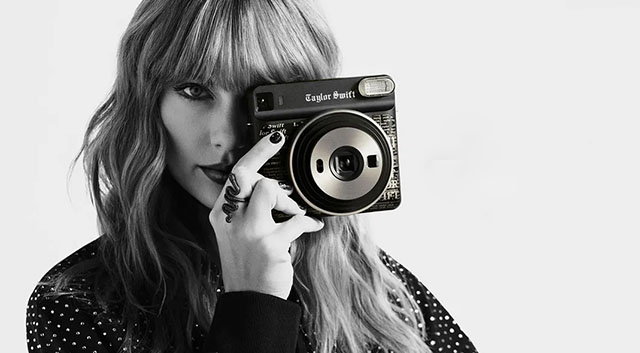
Taylor Swift is a photo enthusiast as well. Her most famous camera is an Olympus OM-D E-M10 (2014), which she used to create some well-known "special filter" photos in 2022 (it wasn't a filter; it was just how the Olympus does it). She also put her name on a Fujifilm Instax camera a couple of years ago. As with everything she touches, it sold extremely well and now sells for $2,000 as a collector's item on eBay.
The most royal Leica photographer: Queen Elizabeth II
| |
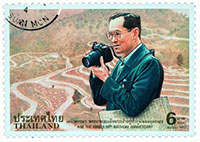 |
| |
King Bhumibol Adulyadej of Thailand on the stamps (2016) |
While this article is about women photographers, many royals have been, or are, active photo enthusiasts. Most prominently, His Majesty King Bhumibol Adulyadej of Thailand (1927-2016), who could almost always be seen with a camera in hand or around his neck, and was even at one time portrayed on postage stamps holding his camera. Also, the Qatar royal family has several members who are photo enthusiasts.
But to return to the subject, let's talk about some of the female photographers who are also royal.
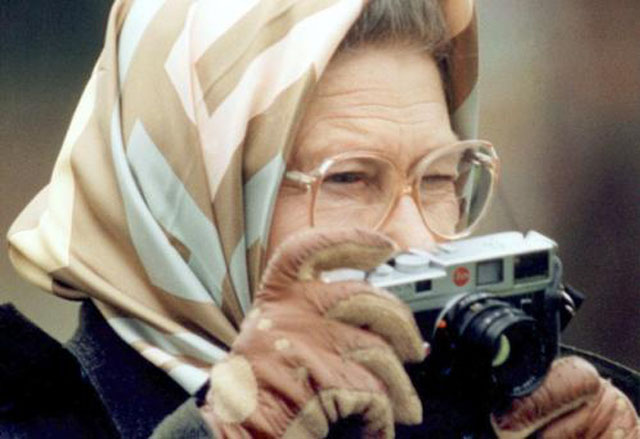
Queen Elizabeth II (1926-2022) used to use a silver Leica M3 with a Leica 50mm Summicron-M f/2.0 and also used Leica M6 with 50mm Summicron-M f/2.0.
 The Queen Mother: Her daughter Queen Elizabeth II's use of Leica's throughout her life is well documented in photographs taken by her moither, The Queen Mother (1900-2002). While The Queen Mother Elizabeth was seldom or never seen with a camera in public, she did use one and took hundreds of rare childhood photgographs.
The Queen Mother: Her daughter Queen Elizabeth II's use of Leica's throughout her life is well documented in photographs taken by her moither, The Queen Mother (1900-2002). While The Queen Mother Elizabeth was seldom or never seen with a camera in public, she did use one and took hundreds of rare childhood photgographs.

Kate Middleton (born 1982), Catherine, Princess of Wales is also a keen photographer, using many different cameras. Here she is seen with Panasonic Lumix camera (with a Leica lens).

Queen Mary of Denmark (born 1972) is an avid photographer, using a number of different camera models to capture and preserve her four children, friends, family and royal life.
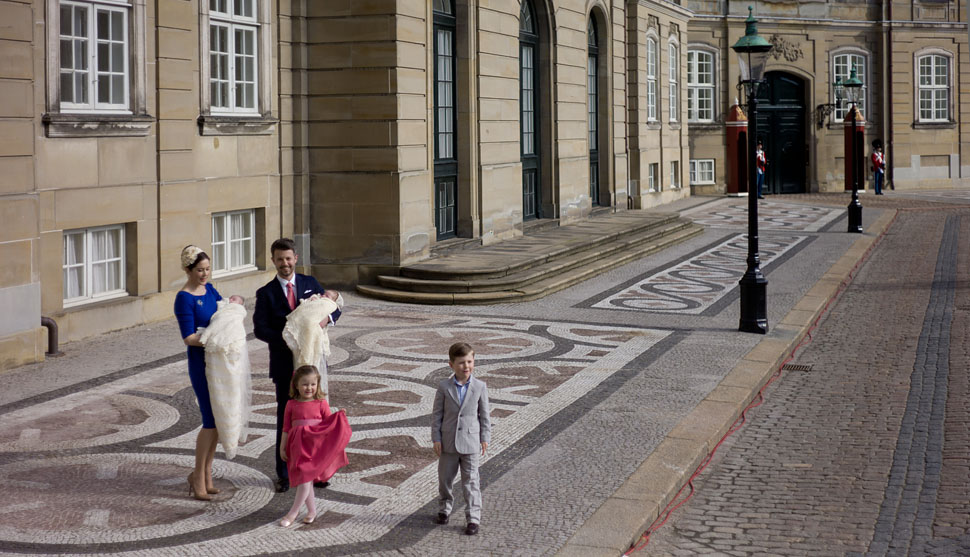
Here is a family photo I took of Queen Mary and her family in front of the royal palace Amalienborg in Copenhagen on the day of the naming of their twins. © Thorsten von Overgaard.
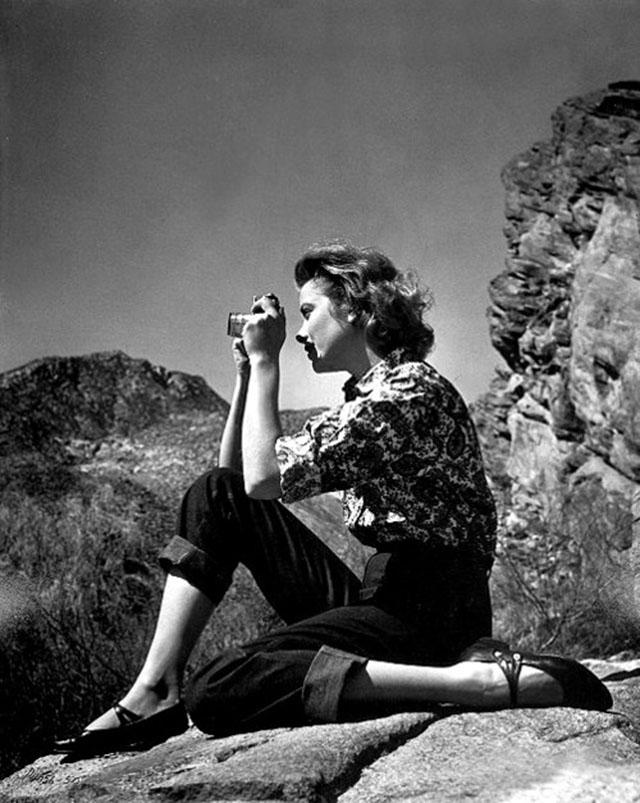
Grace Kelly (Grace of Monaco) (1929-1982) with her Leica, and she used also a Rolleiflex. She was an avid photographer. Although her photographic work is not as widely recognized as her film career or royal duties, Kelly had a genuine passion for photography, which she pursued as a personal hobby throughout her life.
The first female war photographer: Gerda Taro
Romantically involved and an artistic partner with one of the most famed Leica photographers, Robert Capa, she learned photography using Robert Capa's Leica wherever the couple traveled. Gerda also used a Reflex-Korelle, but after they made some more money, he bought himself a Contax in the summer of 1936 in Barcelona, and Gerda Taro was the one using the Leica.
She had the unfortunate fate of being the first female war photographer to die in action, at only 26 years old, in July 1937 in Brunete, Spain. Robert Capa and Gerda Taro had their romantic relationship from 1934-1937, and her and Robert Capa's photos appear in the book *Death in the Making* (1938).
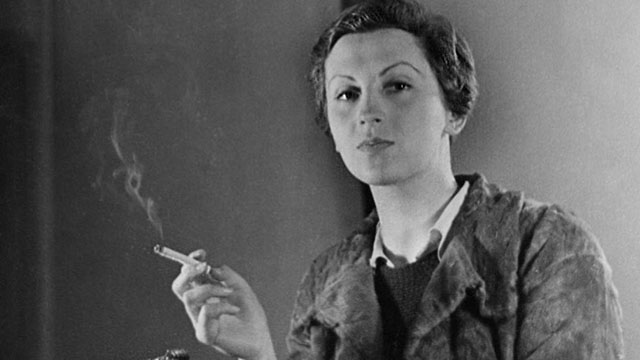
Gerda Taro (1910-1936) was a war photographer, a Leica photographer and in a romantic relationship with Robert Capa.
The Mexican Suitcase
Gerda Taro was unknown for many years until a suitcase with 4,500 negatives appeared in December 2007, also known as "The Mexican Suitcase."
Three boxes of negatives contained 4,500 images of the Spanish Civil War by Robert Capa, Gerda Taro, and "Chim" David Seymour.
The fact is that Gerda Taro and Robert Capa initially worked with one camera, and the artist name Robert Capa was one they invented for their photos (Robert Capa's real name was Endre Friedmann). Later, they each got their own camera, and she became Gerda Taro (her real name was Gerta Pohorylle). All of this leads to the question we will never know the answer to: Which Robert Capa photos were Gerda's, and which were Robert's?
Long story short, she did exist, and she was a courageous woman who loved Robert Capa and photography. For more on this, read the book "Gerda Taro: Inventing Robert Capa."
Her funeral in Paris, orchestrated by the French Communist Party as a large-scale gesture of solidarity with the Spanish people, was attended by more than 10,000 people.
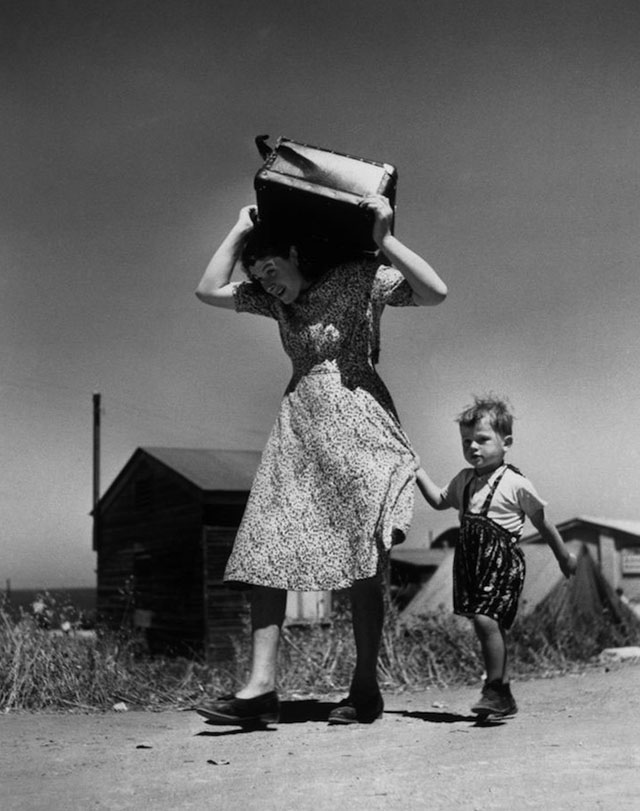
Gerda Taro's photo from 1936 from the Spanish Civil War with a Leica III and a 5cm Summar lens.
"Women photographers who rule the world"
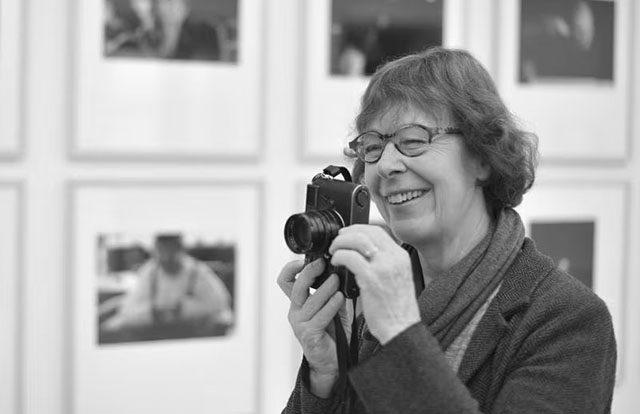
German Leica photographer Barbara Klemm (born 1939) photographed "The Brother's Kiss" in 1979. She woeked for Frankfurter Allgemeine Zeitung for 45 years and was awarded the Leica Hall of Fame award in 2012.
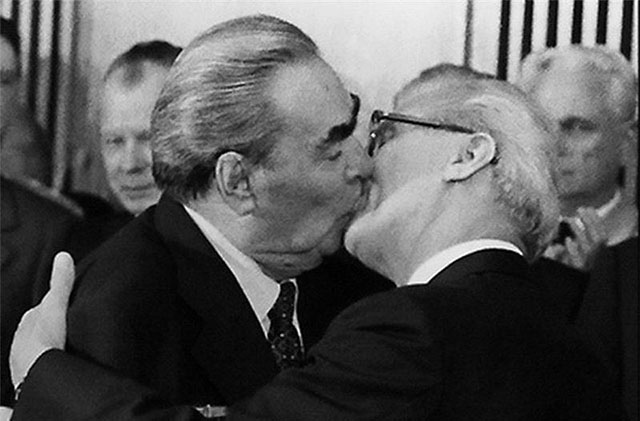
"The Brother's Kiss" by photographer Barbara Klemm in 1979, also known as the "Fraternal Kiss" between Soviet general secretary Leonid Brezhnev kissing East German leader Erich Honecker. This was a real thing, to seal the deal with and a greeting amongst socialist leaders.
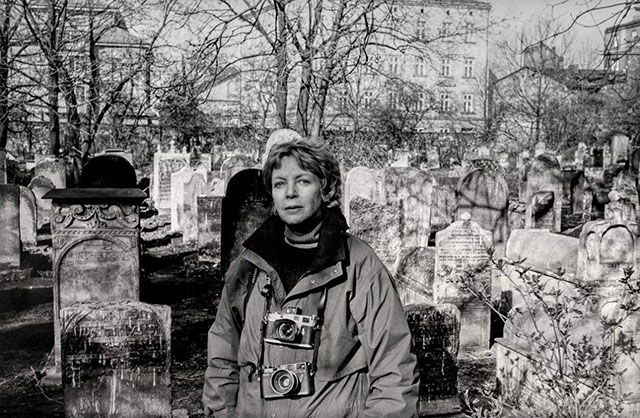
Jill Freedman (1939-2019) was an American documentary photographer. Here she is seen in Poland in 1993.
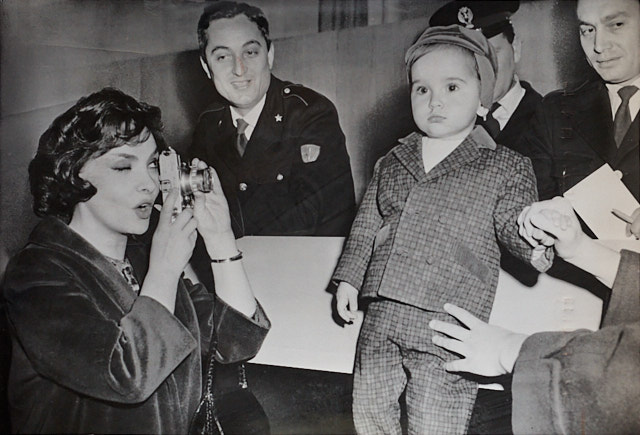
Gina Lollobrigida (1927-2023) was an Italian actress, international symbol of elegance – and a Leica photographer . Here in Rome Airport 1959 with her Leica, photographing her then 19 months old son Milko Skofic Jr. while waiting for his dad. She photographed Paul Newman, Salvador Dalí, Henry Kissinger, Audrey Hepburn, Ella Fitzgerald, and the German national football team, to name a few. There is a video about her on YouTube.
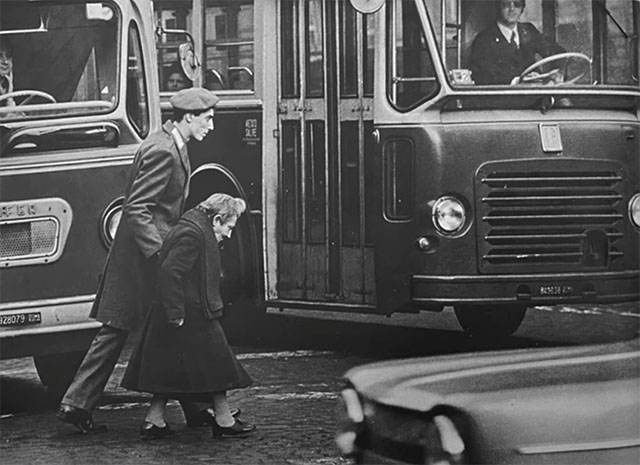
A scene in Rome photographed by Gina Lollobrigida.
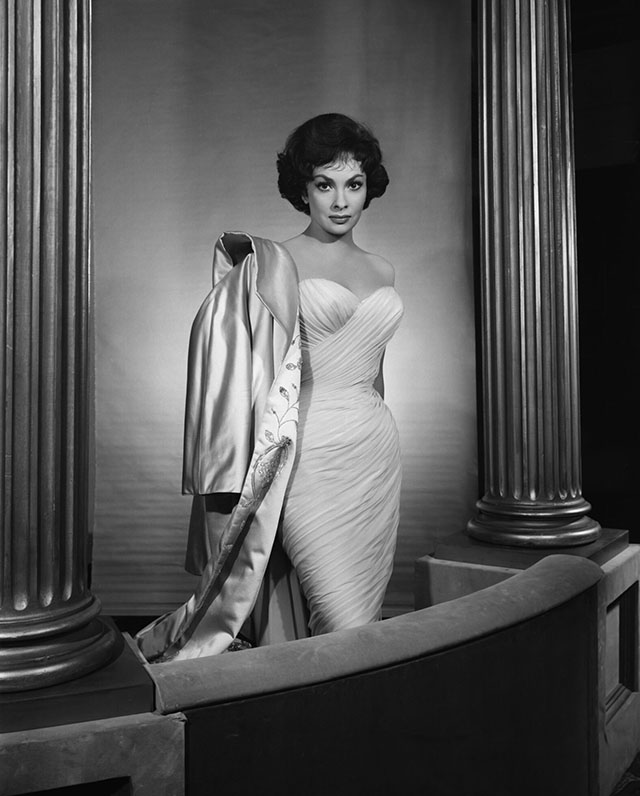
Here Gina Lollobrigida is photographed in 1958 by another (sometimes Leica) photographer, Yousuf Karsh to illustrate her talent both in front and behind the camera.
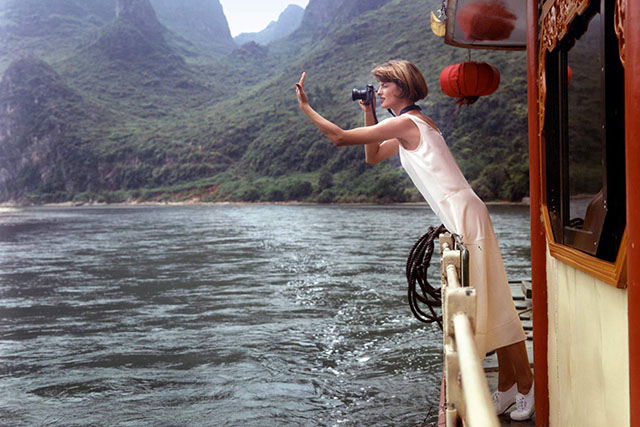
Linda Evangelista with the Leica M6 she bought in Kowloon, Hong Kong and took on the Li River in Guangxi.

Beyonce is often seen with a camera when out and about. Mostly a Canon, but occasionally a Leica Q2.
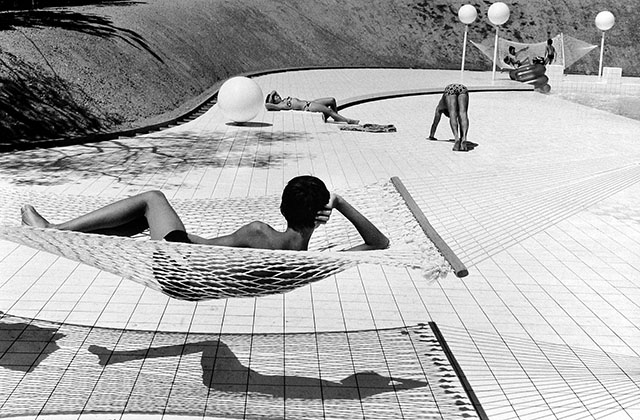
Martine Franck (1938–2012) made this photograph of people by a swimming pool designed by Alain Capeillères. She was discovering photography and the Leica in 1963 and met Henri Cartier-Bresson in 1966, whom she later married.
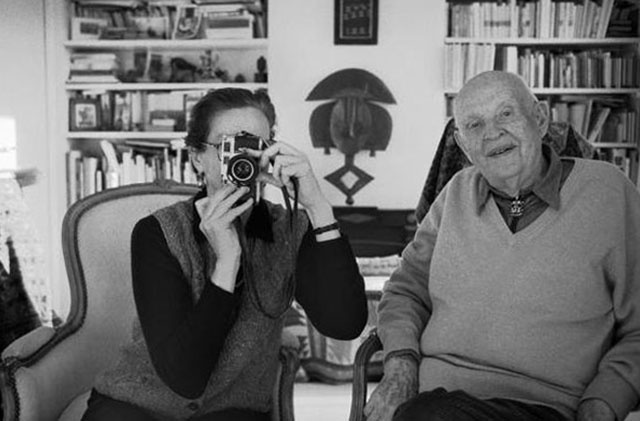
Martine Franck (1938-2012) and husband Henri-Cartier Bresson (1908-2004) in their home on the top floor of 198 rue de Rivoli in Paris. In 2002, she created, with Henri Cartier-Bresson and their daughter Mélanie, the Henri Cartier-Bresson Foundation in Paris
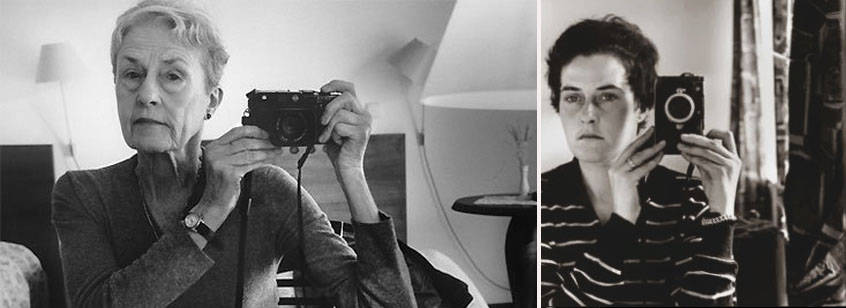
Magnum photographer Inge Morath (1923-2002) was a Magnum photographer. The photo to the right is from 1958. After she passed of cancer in 2002, her archive was acquired by the Beinecke Library at Yale Universityand there is also the Inga Moreath Foundation c/o Magnum Foundation New York.

Inge Morath from her "Chinese Encounters" in China over the period 1978 - 1983.
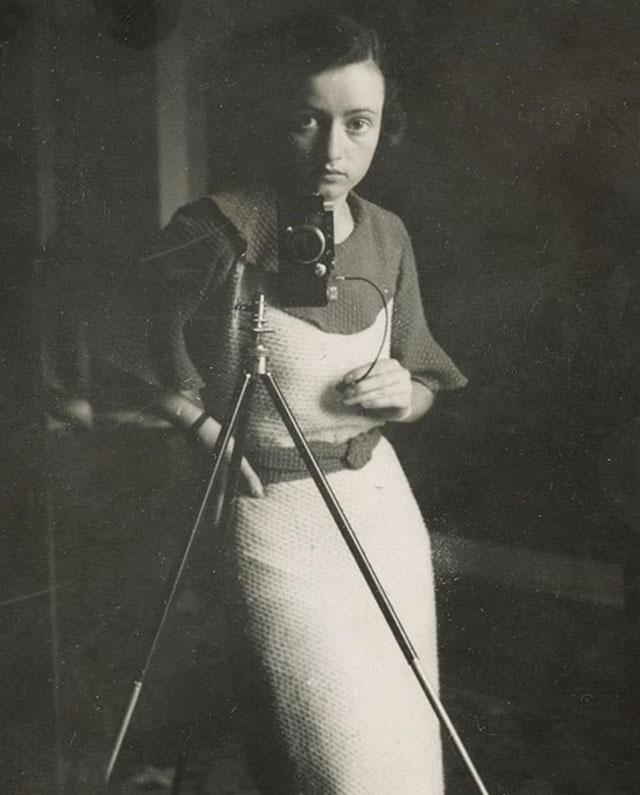
Lore Kruger (1914-2009) was a German photographer most famous for her photographs taken before World War II, in the style of "New Seeing" inspired by Bauhaus. A suitcase with her pictues landed at the CO Berlin gallery and resulted in the large exhibtion in 2015.
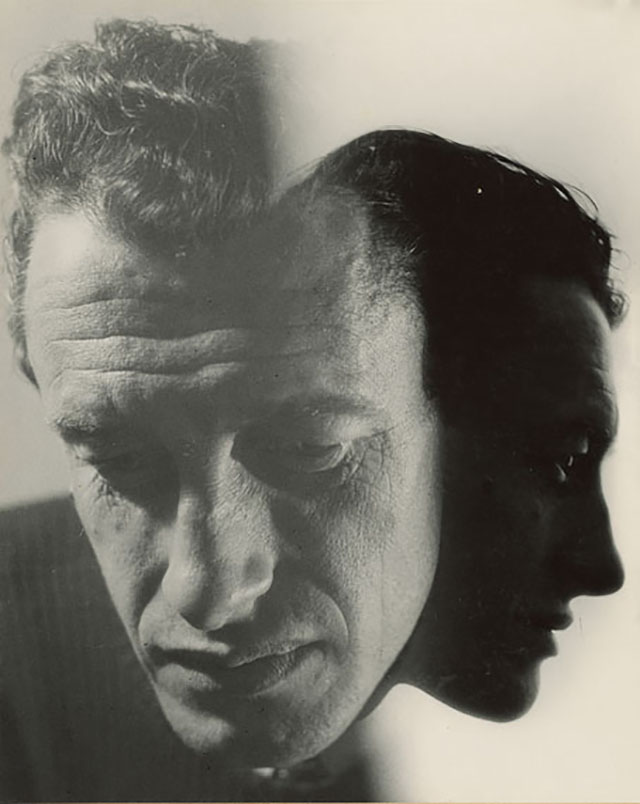
Photo by Lore Kruger, 1936.
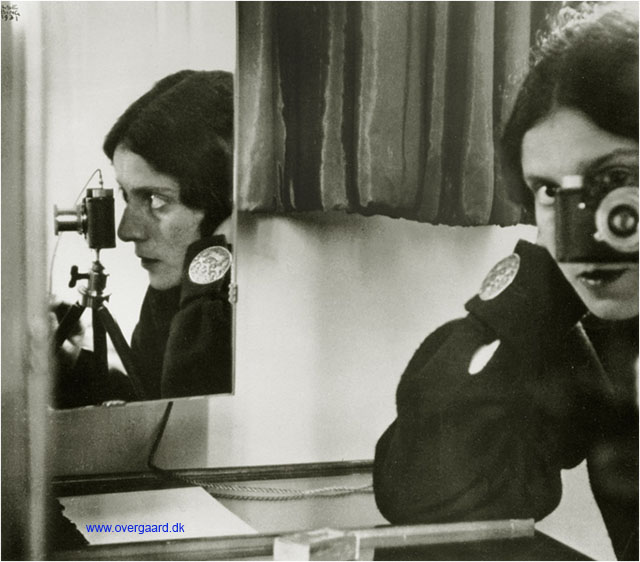
German pioneer avant-garde and commercial photographer Ilse Bing (1899-1998) self portrait. Known as "Queen of the Leica". She gave up photography in the 1950's: After a 15 year almost explosive career with exhibitions at Louvre in Paris, Mueum of Modern Art in New York, she put the camera away and dedicated her time to writing poetry, made drawings and collages – and only occasionally incorporated bits of photos.
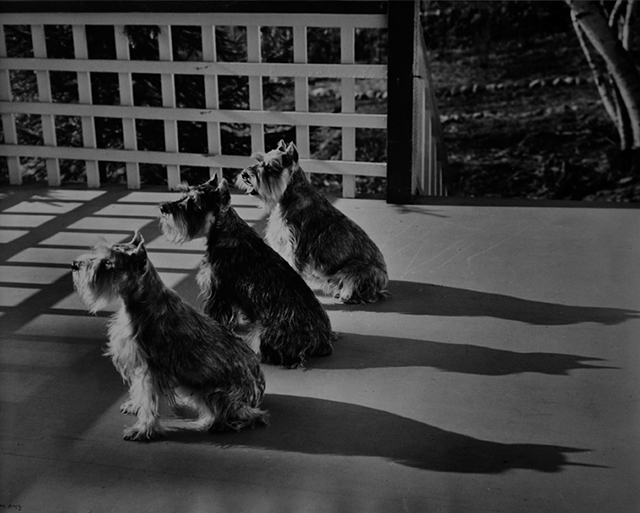
By photographer Ilse Bing.

Jessica Lange (born 1949) is an avid Leica photographer on set, in life and doing photo projects and exhibitions. In 2008 she published her book 50 Photographs along with an exhibition at the George Eastman House. In 2010 she published her book In Mexico along with an exhibition. In 2013 she made a children's picture book, It's About a Little Bird, and in 2014 she exhibited in Moscow's Multimedia Art Museum, and in 2019 she published her Highway 61 photo book, and in 2022 her photo book Derive.
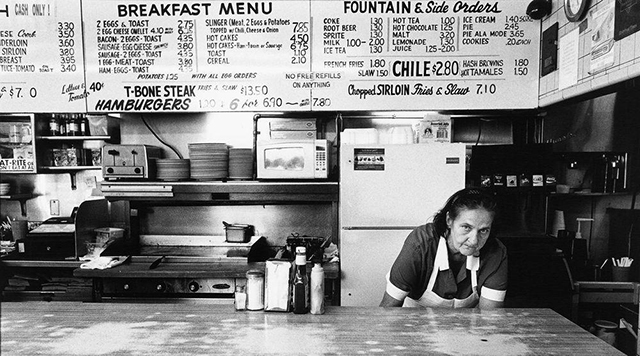
From the book Highway 61 by Jessica Lange.
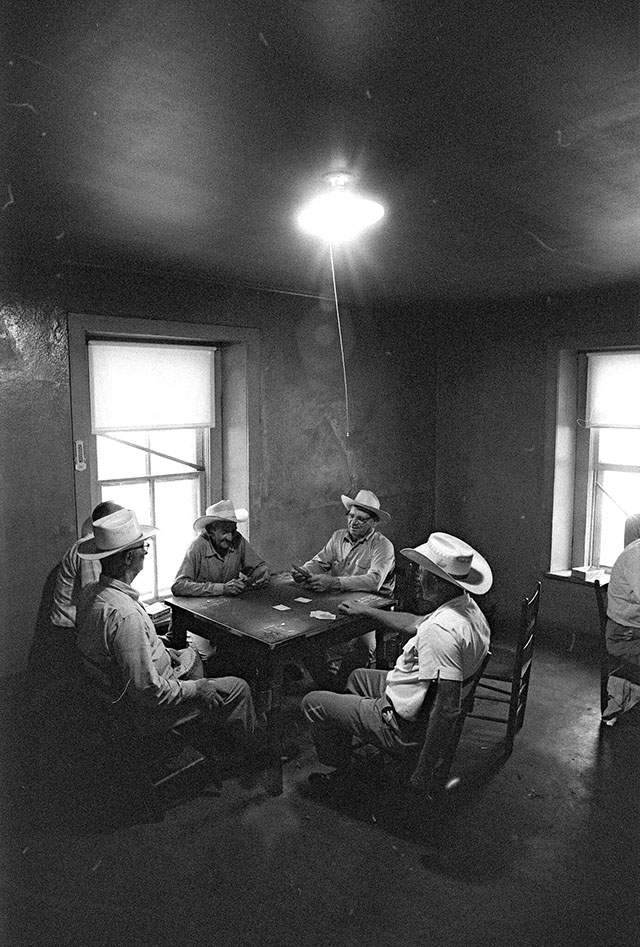
Wendy Waitriss (born 1943) and Fred Baldwin (1929-2021) had a companionship as photgoraphers as well as husband and wife, and each photo they took carried both of their credits. They saw their Leica cameras as “a passport to the world” that helped them document nature, the civil rights movement, human rights and cultural stories globally, as well as life in rural America. Here is one from Texas in 1977. They cofounded the FotoFest, a major photography festival in Houston, Texas where they lived. She was the first female photojournalist to win the Oskar Barnack Award, in 1982.
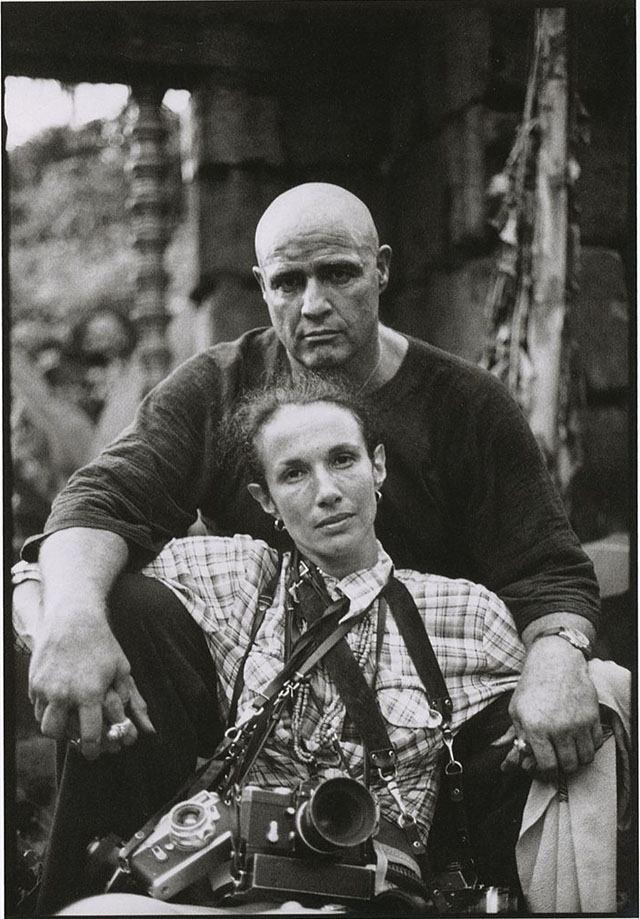
Mary Ellen Mark with Marlon Brando on the set of “Apocalpyse Now” 1979.
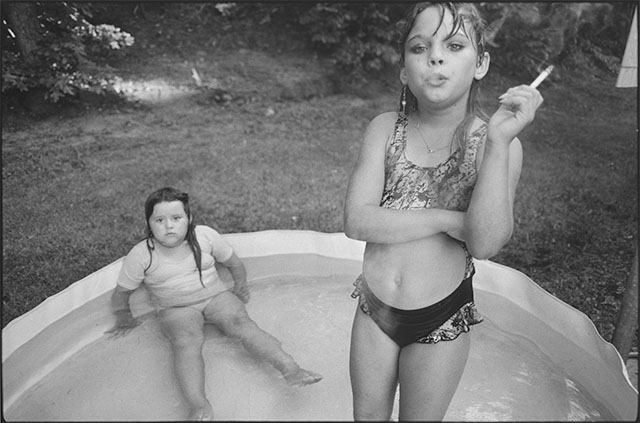
In 1990, American photographer Mary Ellen Mark (1940-2015) photographed "The Smoking Girl" Amanda Marie Ellison, 9 (and Amy Minton Velasquez, 8 sitting) in the "Sin City" disctict of Valdese, N.C. for Life magazine to cover a school for "problem children".

Mary Ellen Mark photographed in 1987 by Martin Bell.
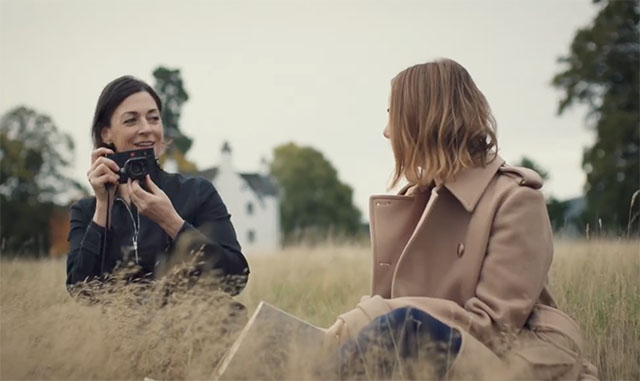
Mary McCartney, daughter of Paul and Linda, is a very enthuastic Leica user, to say it mildly. She can be seen using good ol' film cameras as the Leica Minilux, Leica M6, as well as modern Leica Q, Leica SL2 and - naturally - Leica M. In the photo, Mary and sister Stella McCartney.
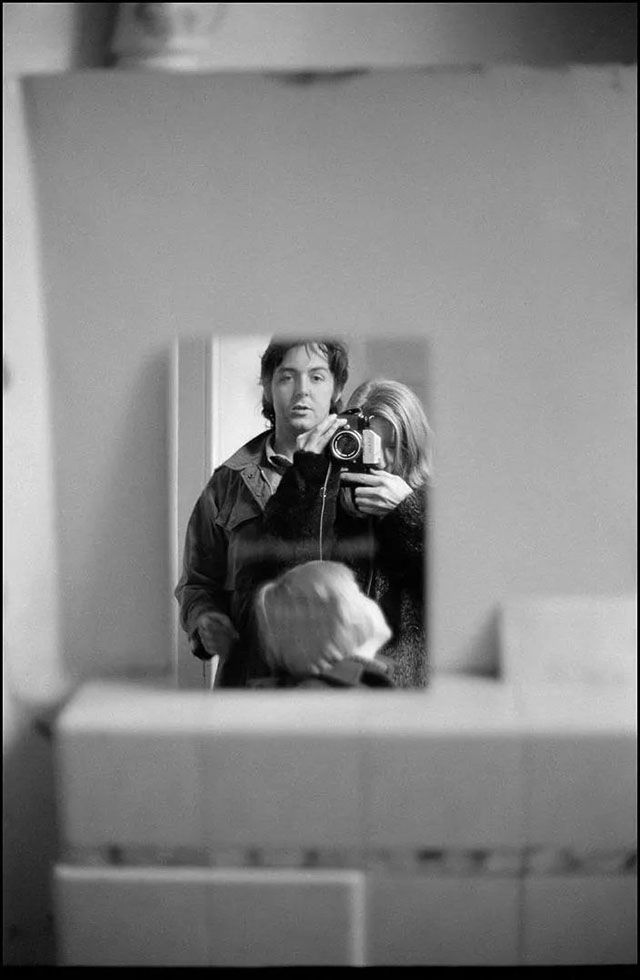
Linda McCartney (1941-1998) was a photographer and mother of four (including Mary McCartney mentioned above) and managed to make a name for herself in her too short life.
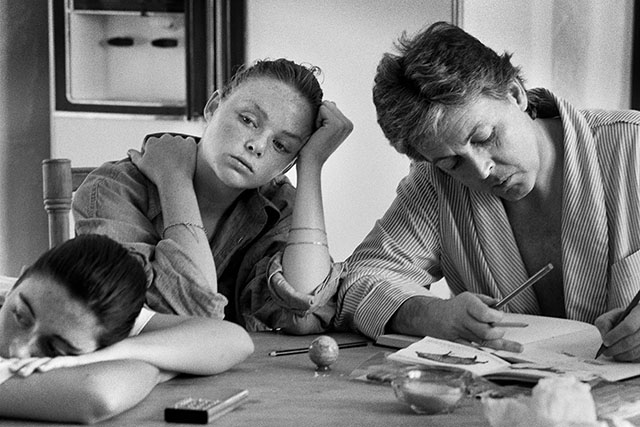
The family McCartney by Linda McCartney, 1988.
Other Fish to Fry?
A possibility for why fewer women than men make photography into a glorious career could be that they have more important, interesting, or profitable things to do. Or simply a family to take care of.
There are many current professional female photographers in advertising, wedding photography, portrait photography, etc.—fields where stability in terms of time and money is possible, allowing them to raise children at the same time.
The majority in my photo workshops are professionals who are passionate about photography but "couldn't afford to be professional photographers" as they have a well-paid career to attend to. For the record, 30% of my workshop students are women, 70% are men.
Then there are also a few in history who simply focused their photography around their existing home and family. The "stay-at-home photographers" who couldn’t or wouldn’t travel for days or weeks to do projects. Sally Mann is one such example, centering her early photographic career around her three children and home.
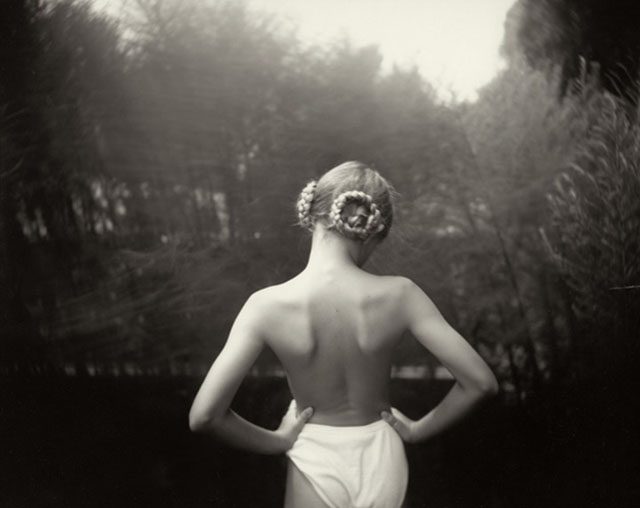
Sally Mann (b. 1951) is an American photographer known and admired for her large-format photographs of her family, particularly her three children and occasionally other members appearing. She gained international attention with her 1992 book Immediate Family, which also earned her a reputation as a somewhat controversial photographer. The idea that a mother would photograph her own children at home (sometimes naked) seemed a bit beyond what was considered within the norm at that time. She was named "America's Best Photographer" by Time magazine in 2001.
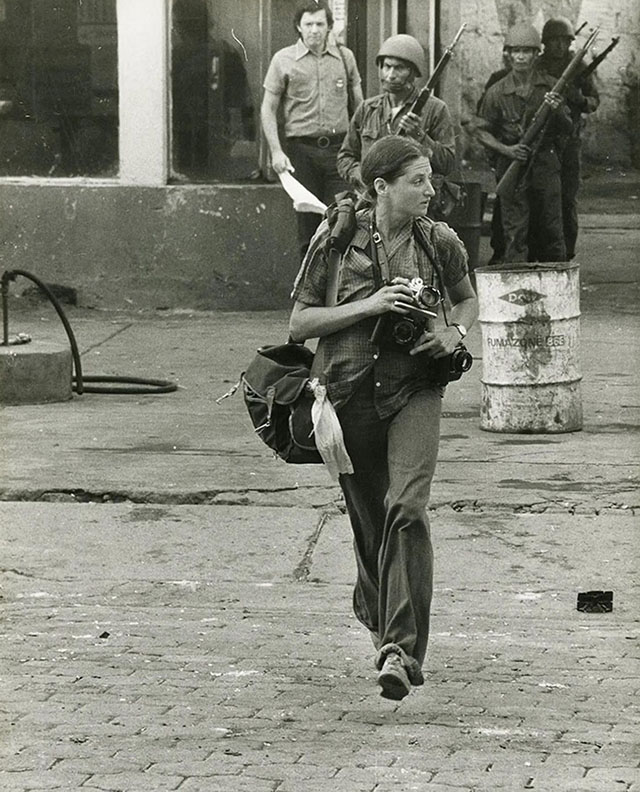
Susan Meiselas (1948) is an American photographer and member of Magnum since 1980. Here she is photographed in Nicaragua in 1978 by Alain Dejean.

Managua, Nicaragua, July 20, 1979 by Susan Maiselas.
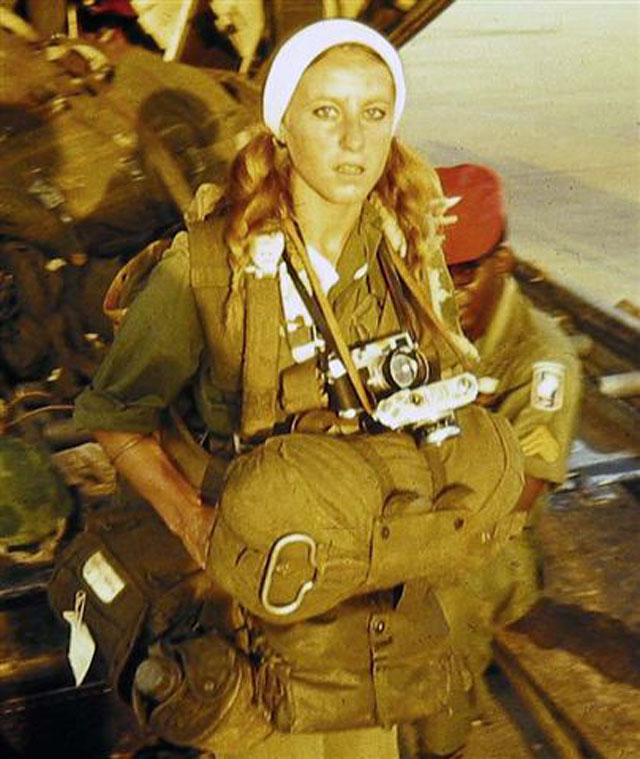
French born Catherine LeRoy (1944-2006) in Vietnam, the first woman photographer to win the Robert Capa Gold Medal Award.
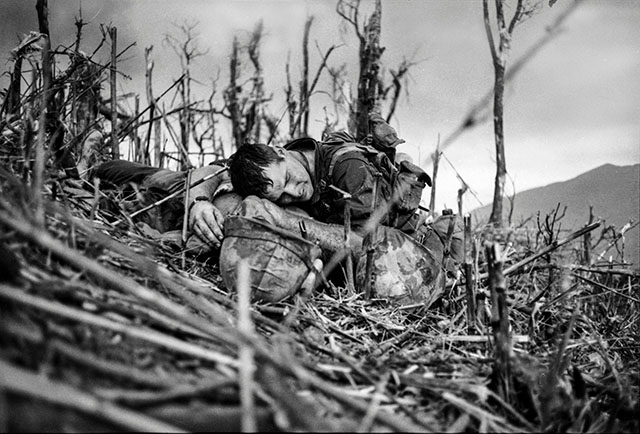
Vietnam, in 1967 by Catherine LeRoy
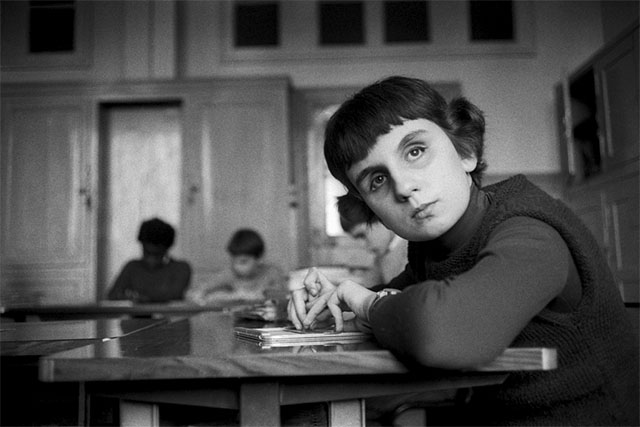
Jane Evelyn Atwood (born 1947) is an American phogtographer living in Paris. Her work has portrayed blind children (as in the photo above, "The Blind" from 1988), women in prison, the aftermath of landmines, and more.
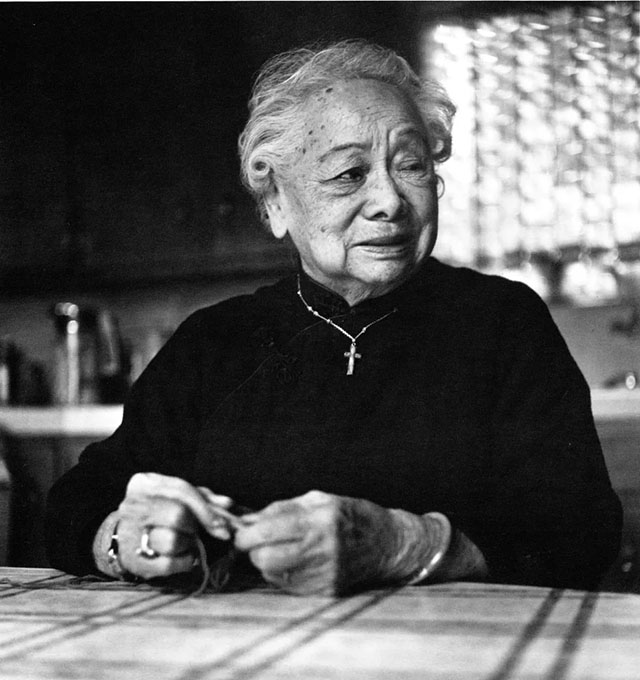
Imogen Cunningham (1883-1976) was an American photographer known for as wide subjects as botanical photography, nudes, and industrial landscapes - but also experimented with portraits and street photography. The photo above is from her series of women "After Ninety".
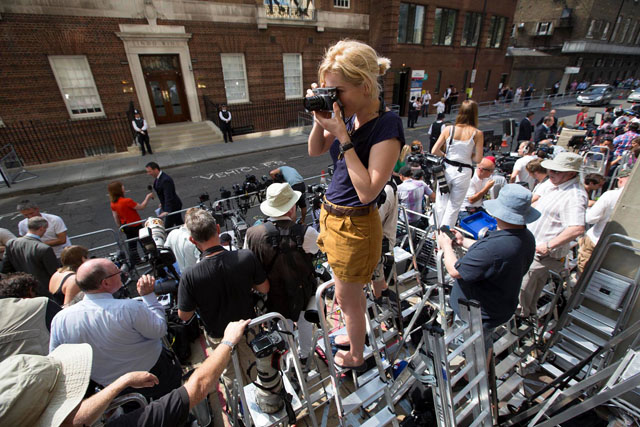
London-based photographer Sarah Lee of The Guardian and The Observer with her Leica. Photo by Richad Pohle.

"Bus boy" by Sarah Lee.
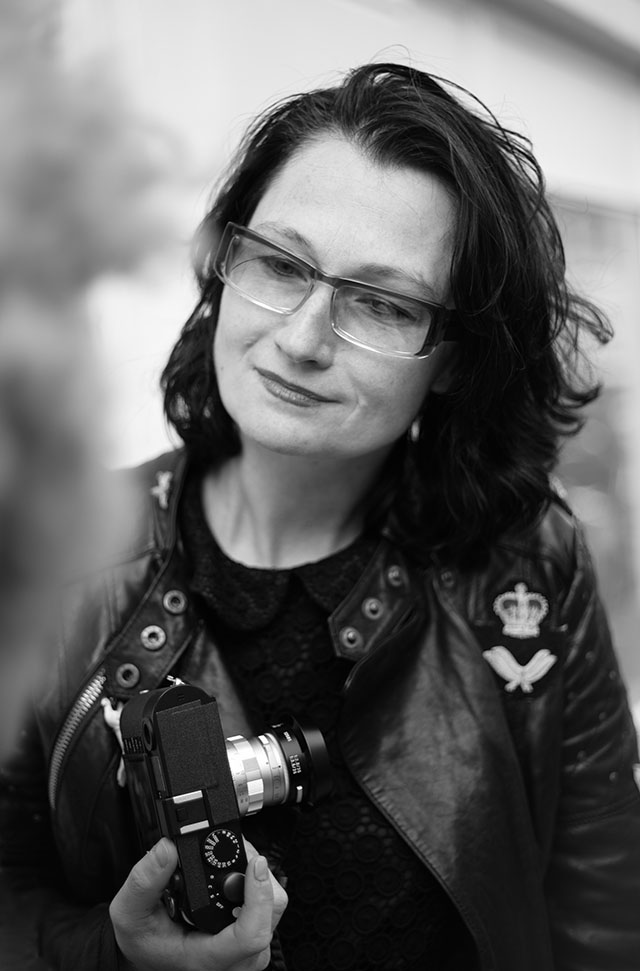
Austrian photographer Birgit Krippner living in New Zealand and working on art projects as well as reportages for New York Times, Wall Street Journal, etc. Winner of the Team Lee Award for photojournalism and Grand Prix Terroirs d'images in Paris. © Thorsten Overgaard.
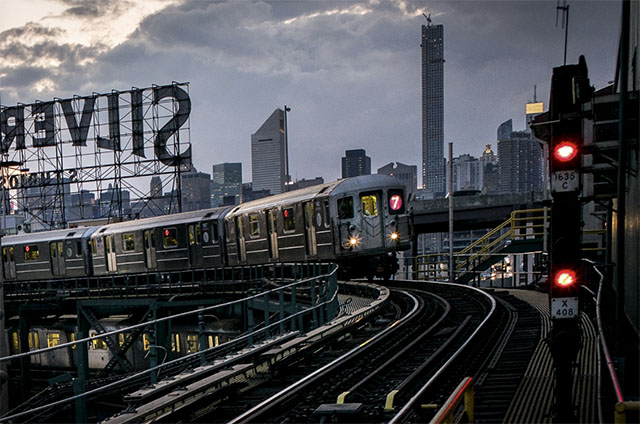
"Seven Train, Queens" by Birgit Krippner.
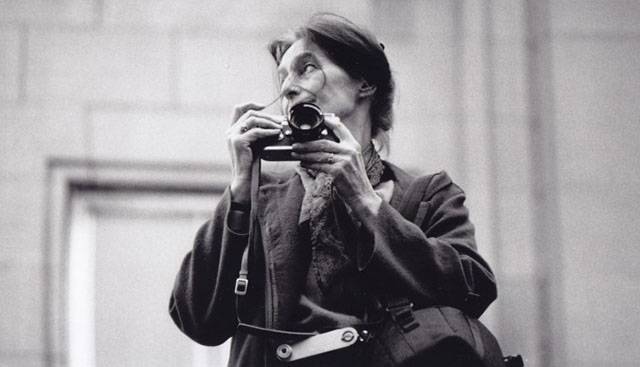
Evelyn Richter (1930-2021) was a German art photographer and occasional Leica user, documenting the life in East Germany and more.
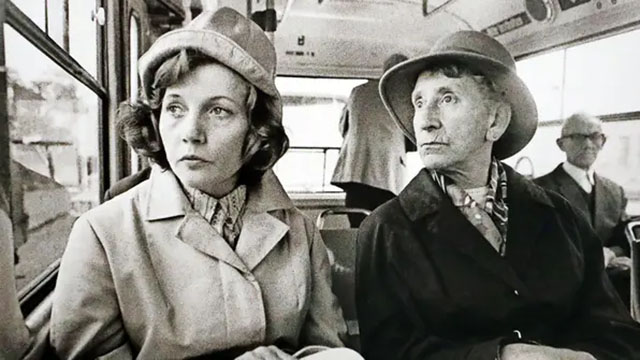
Life in Germany in 1954 by Evelyn Richer.
The acutally famous female photographers
Some female photographers raise to world fame, despite their lack of willingness to put themself out there or engage in shameless self-promotion. Herre are some of them.
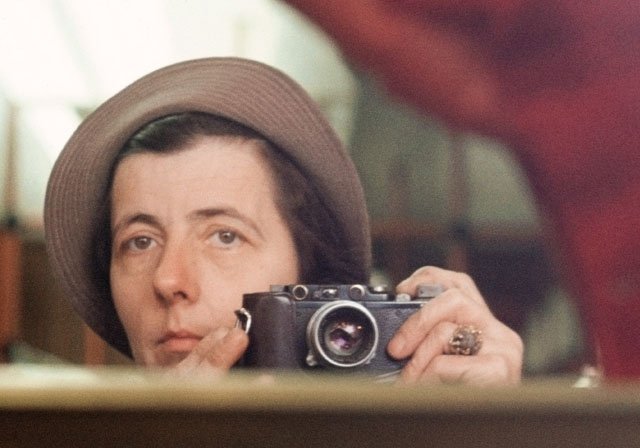
The American photographer Vivian Maier (1926-2009) is mostly known for her 6x6 cm negatives photographed with the Rollieflex she got in 1952. When color film came about she started using Kodak Ektachrome and a Leica IIIc.
The famously unknown photographer: Vivian Maier
The story of Vivian Maier is a curious one: From age 20, she was a nanny in Chicago and remained so for the next forty years. While walking the children, she would also photograph. Which in itself is a good story, but then it takes a twist; she kept her photos almost as a secret. She didn't show anybody her photos, and many of her film rolls were just stored away undeveloped.
Many people who met her have testified that they did, in fact (now that they think about it), see her with a camera a lot of the time—but it never occurred to them to find out what pictures she was taking. And probably, we can only guess now, this unnoticed existence as a photographer suited Vivian Maier just well.
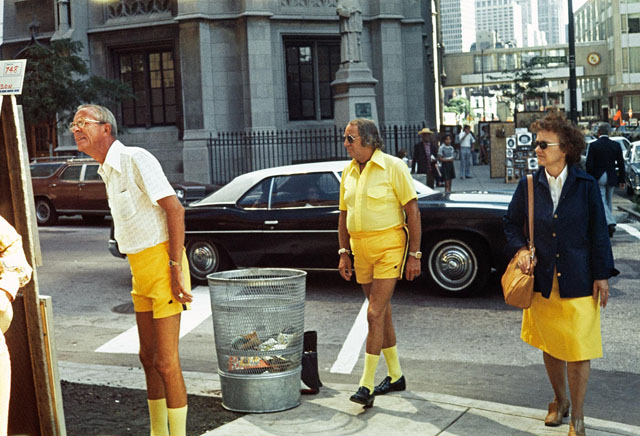
Chicago in 1975 through the lens of Vivian Maier.
When Vivian Maier passed away in 2009, her modest estate of saved newspapers (she had stacks of them), film rolls, and cameras was auctioned off in a garage sale. Two young men individually offered a small amount for a share of negatives and film rolls, and it was their later discovery of how great a photographer she had been that made Vivian Maier famous. Her story was so odd and unusual that it was worth telling in articles, books, and movies.
Many of those color films are still undeveloped and may remain so until technology exists to save them. However, with what has so far been made available of the estimated total of 150,000 pictures she took in her lifetime, it is obvious that Vivian Maier was one of the greatest photographers of the 20th century.
Vivian Maier obviously never attended any school for photography. Read also my "Story Behind That Picture: "10 Untold Lessons from Vivian Maier".
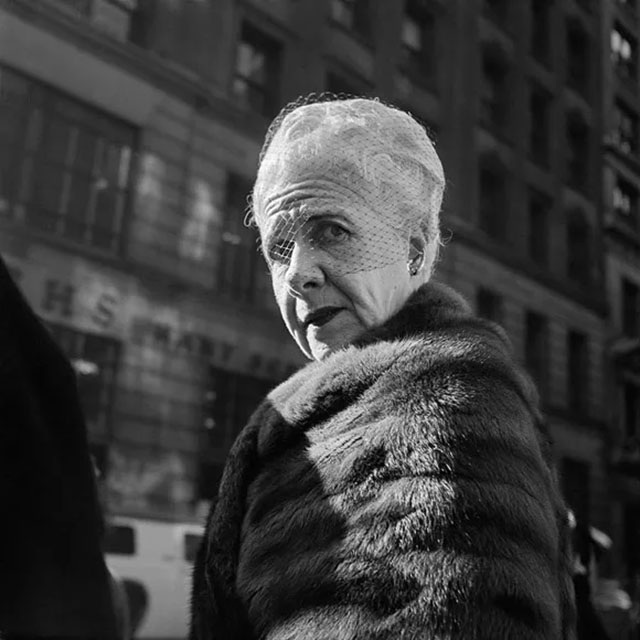
Chicago woman by Vivian Maier.
The famous female photographer everybody knows: Annie Leibovitz
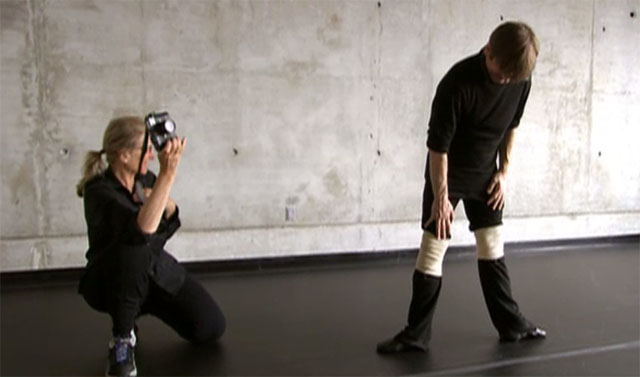
Annie Leibovitz with her Leica M6, which she uses for assignments and private family photos. She uses several cameras such as Hasselblad, Mamiya, Leica S, Leica M6, Canon, Nikon - with no particular brand preference (the famous John Lennon photo of him naked next to Yoko Ono, taken hours before his death, was a 6x6 shot). Photo from the 2008 documentary "Annie Leibovitz: Life Through a Lens" by Barbara Leibovitz.
| |
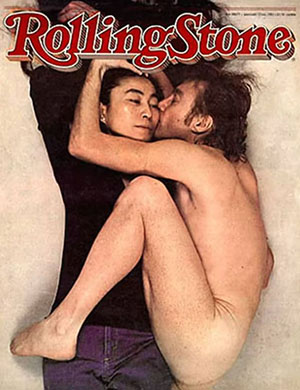 |
| |
John Lennon and Yoko Ono, 1980. By Annie Leibovitz |
| |
|
Annie Leibovitz could have been the name of your art teacher at the university, making you sweat with home assignments about Vermeer and Picasso. But there was a different path for her in life.
She attended the San Francisco Art Institute, studying painting with the intention of becoming an art teacher. However, in school, she stumbled into a photography workshop and changed her major to photography. Inspired by Robert Frank and Henri Cartier-Bresson, she set off on a career as a photographer, and by 1971, two years after leaving school, she was working for Rolling Stone magazine as their lead photographer. Later, what has made her a household name, she became a favorite of Vogue and other magazines for a lifetime.
If you listen to Annie Leibovitz in her MasterClass (2017), you will notice that she doesn't have a lot to explain about how she photographs or any direct advice on how to do it. She just does it, the Leibovitz way, so to speak (which is recognizable in style), where celebrities show up and are excited to be working with her. She doesn't have to tell them who she is. Around her is a team of her staff who prepare weeks ahead, assist during the shoot, and help finalize her photographs. All she does is make the decisions and take the photos, and as for which camera and lens she used, she places little significance or interest on that part. That said, and this is meant as a compliment, at the end of the day, all that a photographer should be judged on is the photograph. In her book "Annie Leibovitz at Work" (2018), she seems to have thought more about how to convey her knowledge about people, light, and photography. As such, it is a very interesting book for photographers to read, in which she answers a lot of questions and gives great advice, as well as inspiring stories about photographing Queen Elizabeth II and many other photo sessions of the kind most photographers only experience once or a few times in a career.
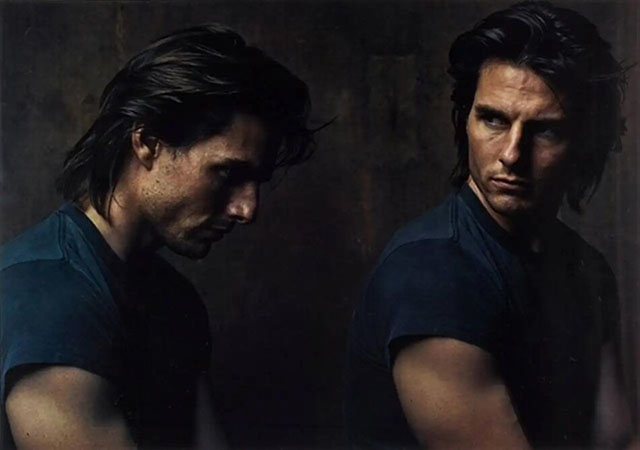
Tom Cruise by Annie Leibovitz (2000).

Leonardo DiCaprio by Annie Leibovitz (1997).
Female photographer who photographs female models: Ellen von Unwerth
The overweight, sweating man who photographs half-naked girls half his age — that is how many "sexy" photographs come about. At least that is the stereotype and probably also close to the truth. It is very popular with audiences, granted, an easy shot to attention, but without much emotional impact.
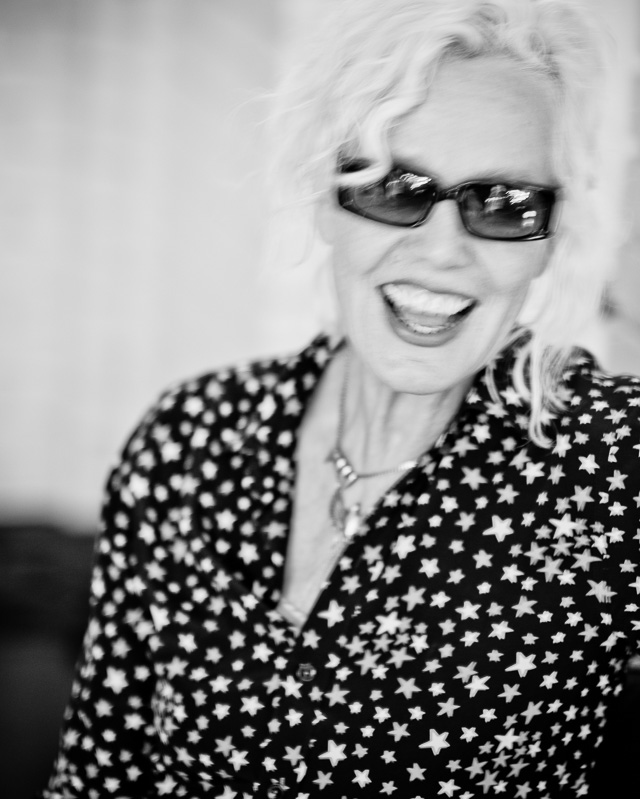
German photographer Ellen von Unwerth (1954) uses many cameras, which is much less important than the unique viewpoint she contributes in her photography. © Thorsten Overgaard.
This stereotype is also what makes Ellen von Unwerth stand out, and where I recently learned that half-naked models are not the same as half-naked models. I stand corrected, because in my small panel of women I showed Ellen von Unwerth's pictures to (reluctant and ashamed to do so), they said that they loved her photographs and the way she showed women with respect.
I looked again, and I frankly can't tell the difference. But they could.
Ellen von Umwerth makes provocative and playful images that celebrate female sensuality and empowerment. Formerly a fashion model, she transitioned to photography, gaining acclaim for her work in major fashion magazines and campaigns.
It is my personal belief that to most men, if it is Ellen von Unwerth, Mario Sorrenti or Mario Testino's photographs of women "are the same" because the subject and the small amount of clothes they wear are similar. Men are dogs anyways; they don't look at the photos to admire how the light falls on the subject, sensing what the subjet might think, or to learn about culture. Which is overstating matters a bit perhaps. We do have Irving Penn, Richard Avedon, and Peter Lindbergh, who portrayed women with some respect, and that respect is visible for men also.
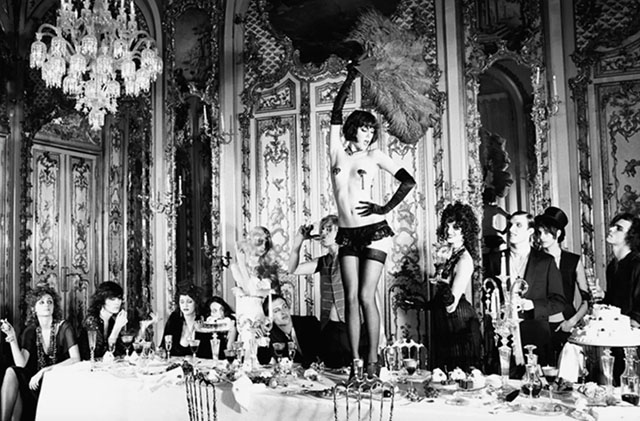
Baccarat II, Paris 2007 by Ellen von Umwerth.
The proof: Women see the difference
I stand corrected. Women see the difference, and that goes both for the photographer and the female audience that looks at her photos. When I look over their shoulders, I don't quite get it. I realized that I cannot do the photos Ellen von Unwerth does, because I don't see what she sees. I-just-don't-see-the-differnce. Even more convincing, when my limited audience of female viewers look at her photos, they see everything and something I don't.
For me, this is very convincing evidence that female photographers, female audiences, and female photo editors and female photo competition judges are necessary. They make up a parallel world whose importance and relevance may have been overlooked by men, because men just don't get it.
Here is an interview with Ellen von Umwerth in British Vogue.

"Office Story" by Ellen von Umwerth.
Women behind men
Lastly, there is the other position. If you are not behind the camera or in front of it, you may be the one supporting a male photographer. Curiously, this is where a few women (with or without cameras) showed great strength.
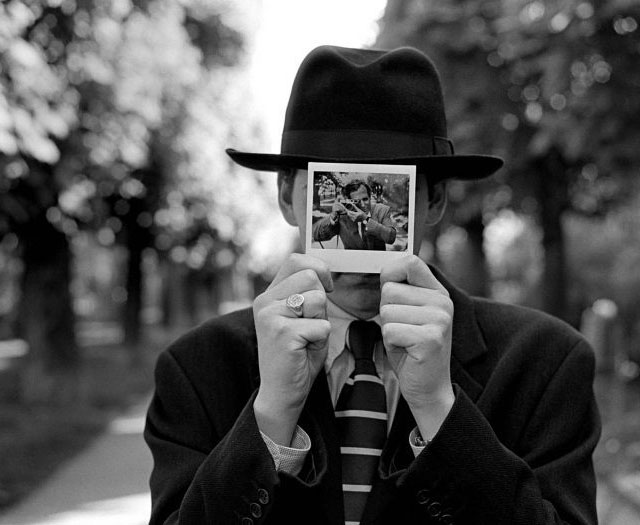
Rodney Smith (1947-2016) was a Leica M4 user in New York, and then a Hasselblad 500 with 80mm user for most of his work. But in this context, his wife Leslie Smolan is the person we focus on.
Behind a strong man ...
Behind a great man stands a strong woman. One such is the widow of Rodney Smith (1947–2016), Leslie Smolan, who had a thirty-year collaboration with her husband and creative partner, Rodney Smith.
As the director of the Rodney Smith Foundation, she is engaged in preserving, enhancing, and sharing Smith's legacy. She is the reason his name and photos appear in so many places today. She managed to get the most prestigious photography collection, the Getty, to buy twenty of his photos. She had Hermès use his photographs for an international campaign. And if you sleep in The Edition Hotel, you have a view of framed Rodney Smith photographs on the walls. All her doing—the woman behind the man.
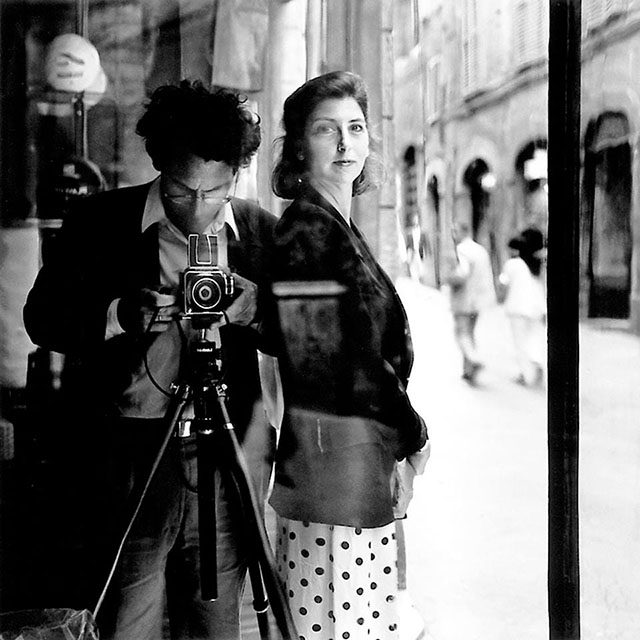
Rodney Smith and Leslie Smolan in Italy, 1990.
Life continuum, continued
Not to forget, In 2002 Martine Franck created, with her husband Henri Cartier-Bresson and their daughter Mélanie, the Henri Cartier-Bresson Foundation in Paris where she was the president for another 10 years. In the period since the foundation was established, it moved into a grand new building on 79 Rue des Archives in Paris, France, close to the Picasso Museum.

The Henri Cartier-Bresson Foundation in Paris, run by the wife.

The Helmut Newton Foundation in Berlin, run by the wife.
Similarly, Helmut Newton Foundation in Berlin was run by wife June Newton (1923-2021) after Helmut Newton passed in 2004. June Newton also operated as a photographer under the pseudonym Alice Springs since 1970.
 Wife of Helmut Newton, Alice Springs was a photographer in her own right.
Wife of Helmut Newton, Alice Springs was a photographer in her own right.
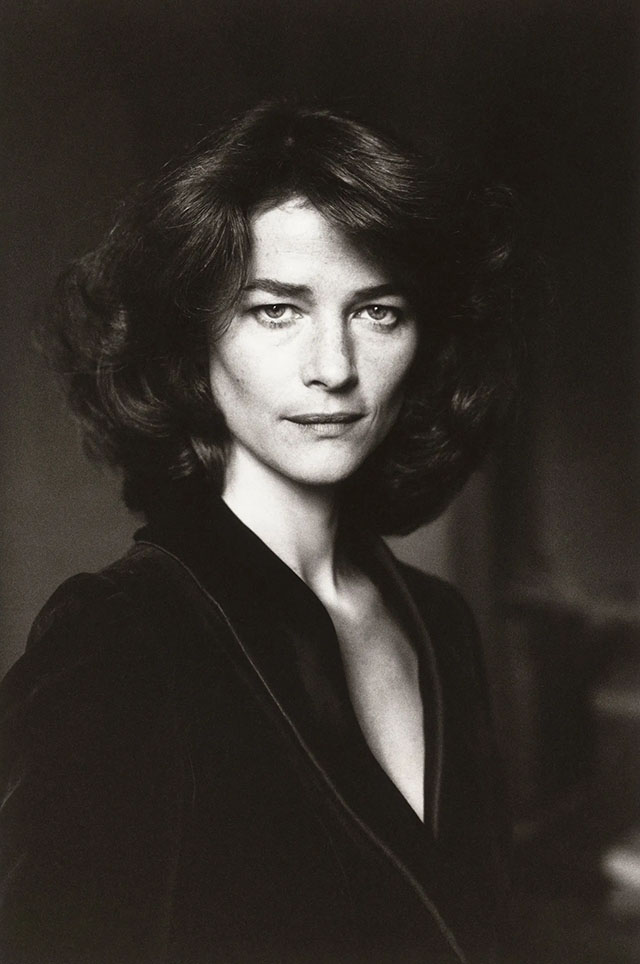
Charlotte Rampling by Alice Springs (1982).
The famale photographers we don't talk about:
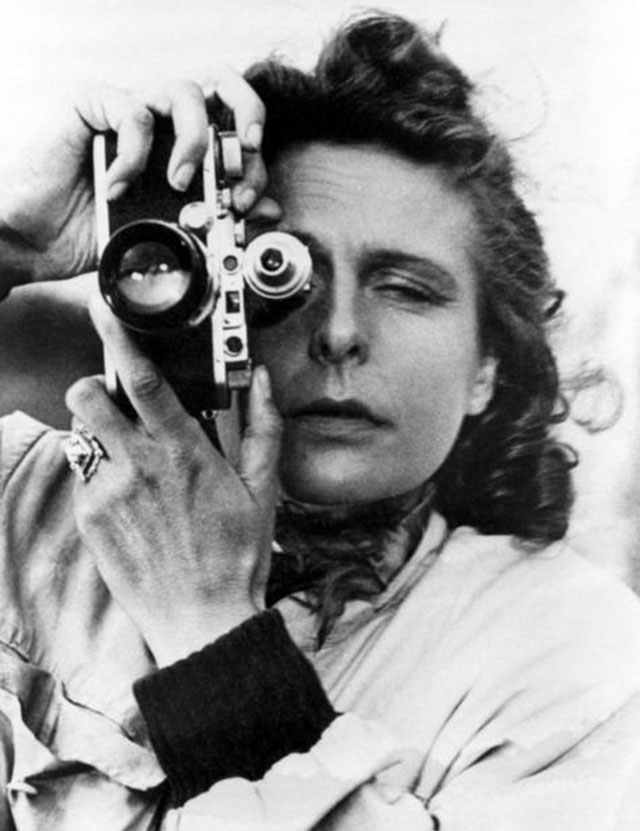
Leni Riefenstahl (Helene Bertha Amalie "Leni" Riefenstahl with her Leica. She lived a long life of 101 years (1902-2003) and was 'on the wrong side of history' as the propaganda filmmaker and photographer for the Nazi's 1932-1938. The documentary "The Wonderful Horrible Life of Leni Riefenstahl" (1993) gives a view into her life. She kept using Leitz Leicaflex and Leica M cameras throughout her life, and for photography projects in Africa in the 1970's where she used the Leica SL film camera.
More to come ...
Bon voyage with it all. I hope this was helpful for you. Sign up for the newsletter to stay in the know. As always, feel free to email me with suggestions, questions, and ideas. And hope to see you in a workshop one day soon.
Want more female photographers?
Feel free to email me with names of female photographers and let's see where this might go.
- Thorsten Overgaard
PS
Thank you to my household survey team
I had help with this article from two women in the household who are also pohotographers.
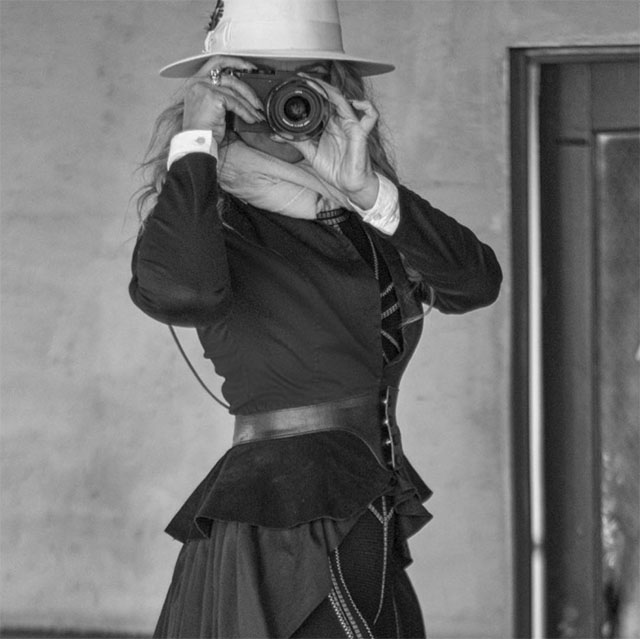
Layla Bego with her Leica Q2 Monochrom. Selfie in mirror.
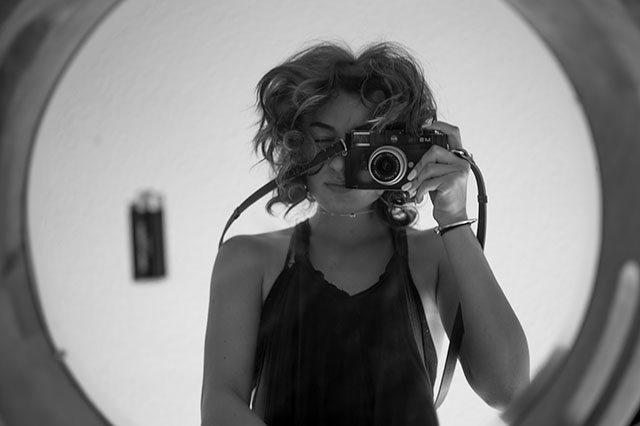
Mia Bego who is an art student at Parsons in New York.
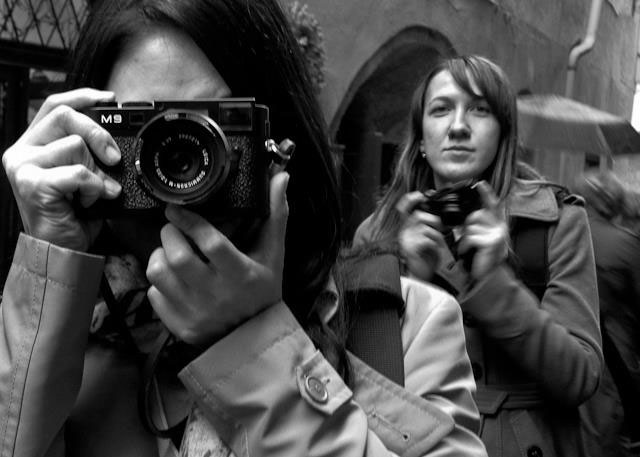
Three female photographers in one photo: Andrea Unterberger and Lisa Kutzelnig out and about photographing in Salzburg during the Overgaard Photo Workshop.. Photo by Laura Kochsiek.
| |
|
|
|
|
| |
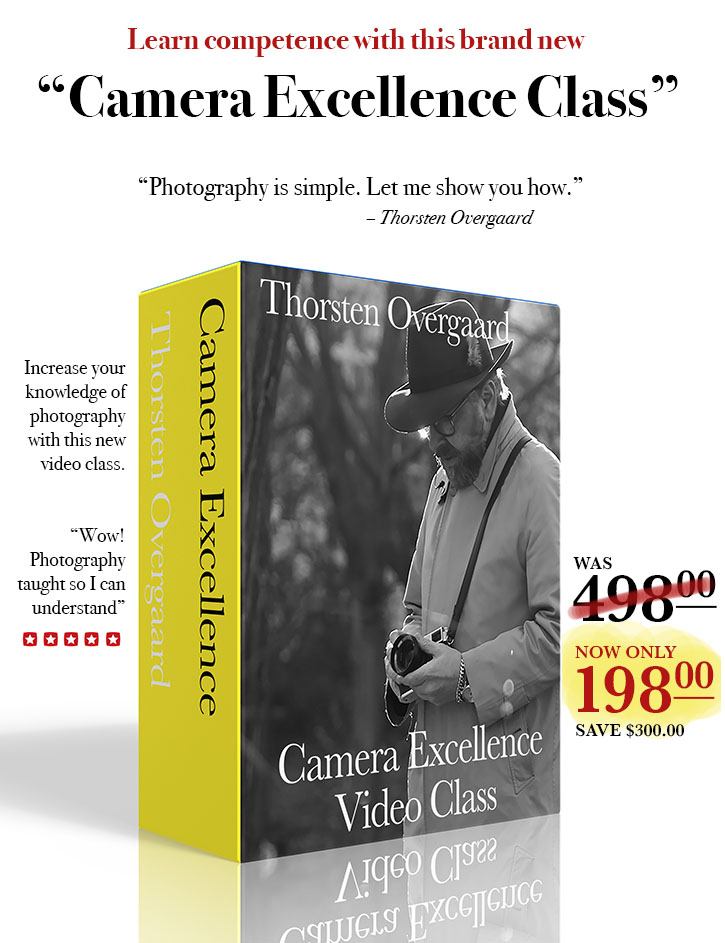 |
|
| |
|
|
|
|
| |
"Photography is simple"
Thorsten Overgaard is one of the best to explain in simple terms how cameras works, and how to get excellent results.
Be competent. Buy and study this easy-to-use video class that explains how to get focus right, what sharpness is, how to get the exposure and the colors right, and more ...
"Easy to apply, photography finally told so everyone can become an expert user"
Normal price $498.00
Explained by Thorsten Overgaard by using Leica Q2, Leica SL2, Leica M11, Leica M10 Monochrom, 35mm film cameras, Leica Digilux 2 and more. |
|
Thorsten Overgaard's
"Camera Excellence Class"
For Computer,
iPad, Apple TV and smartphone.
Normal price $498.00
Only $198.00

Save $300.00
USE CODE: "COXY66" ON CHECKOUT
Brand new. Order now. Instant Delivery.
100% satisfaction or money back.
More info
Item #1847-0323
Released April 2023
|
|
| |
|
|
|
|
![]()
